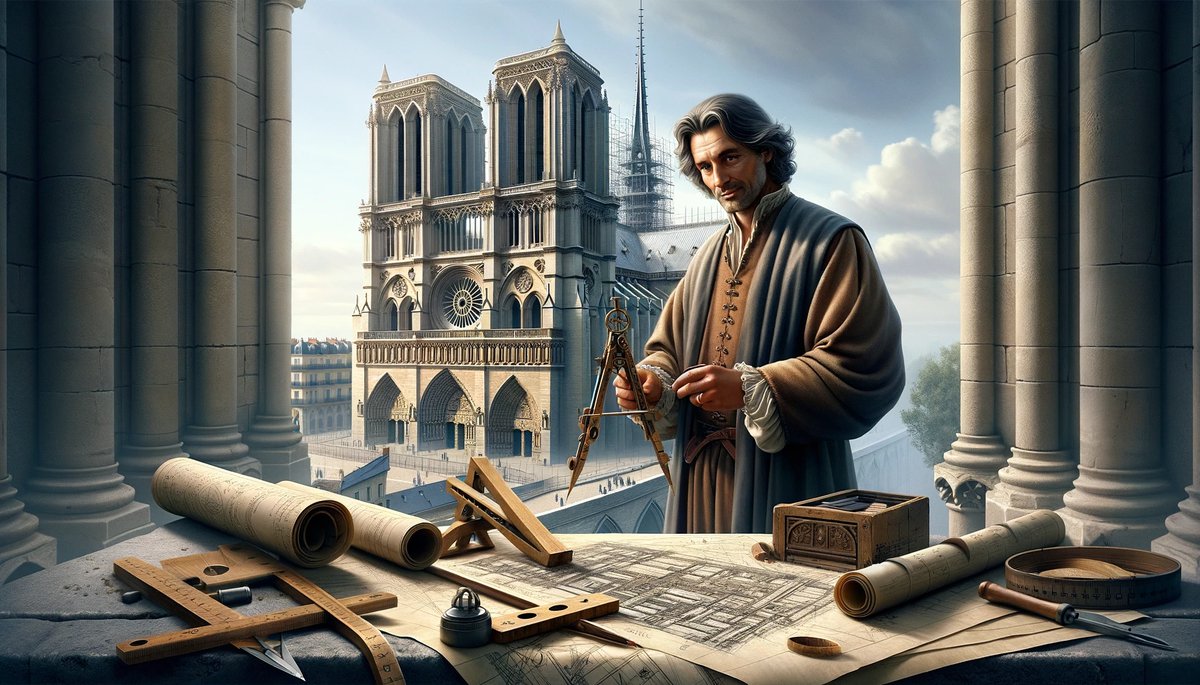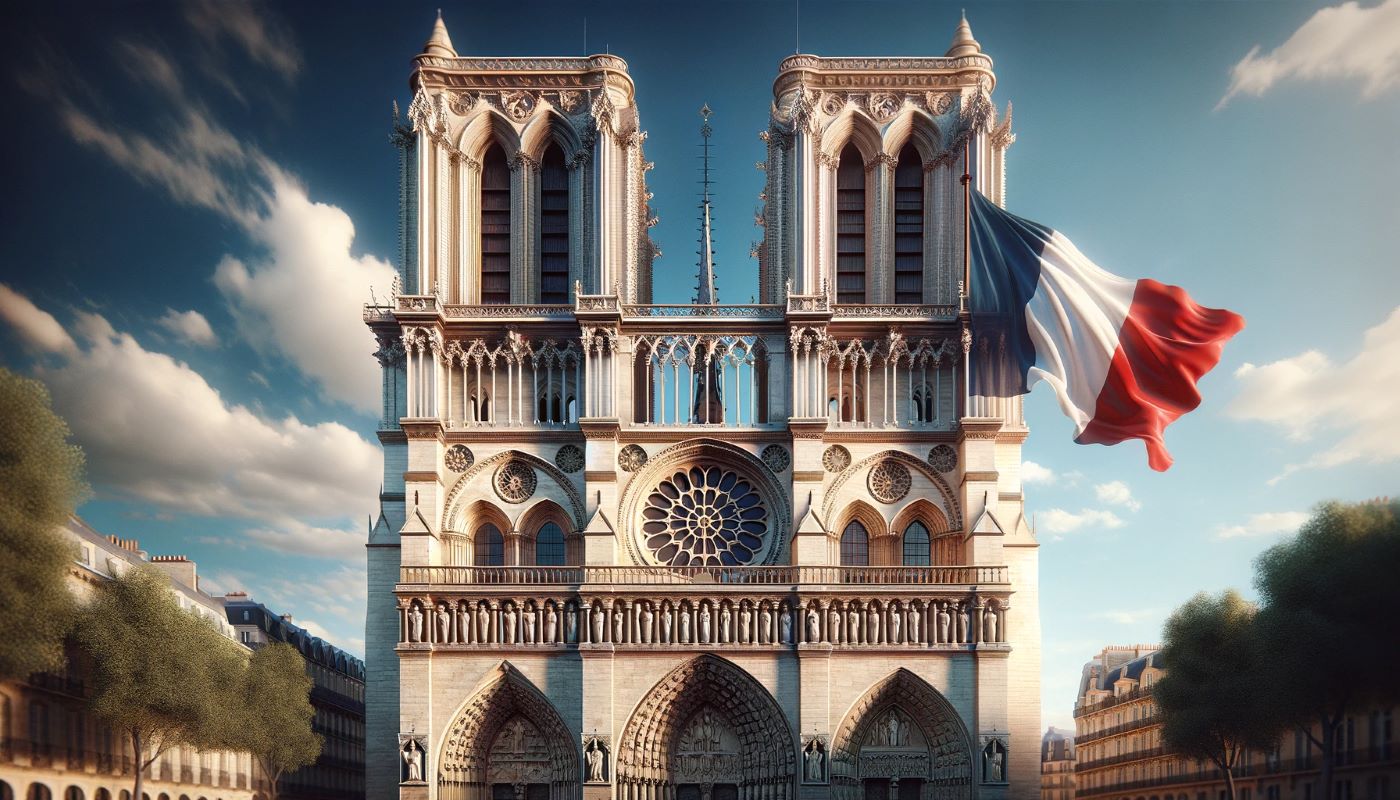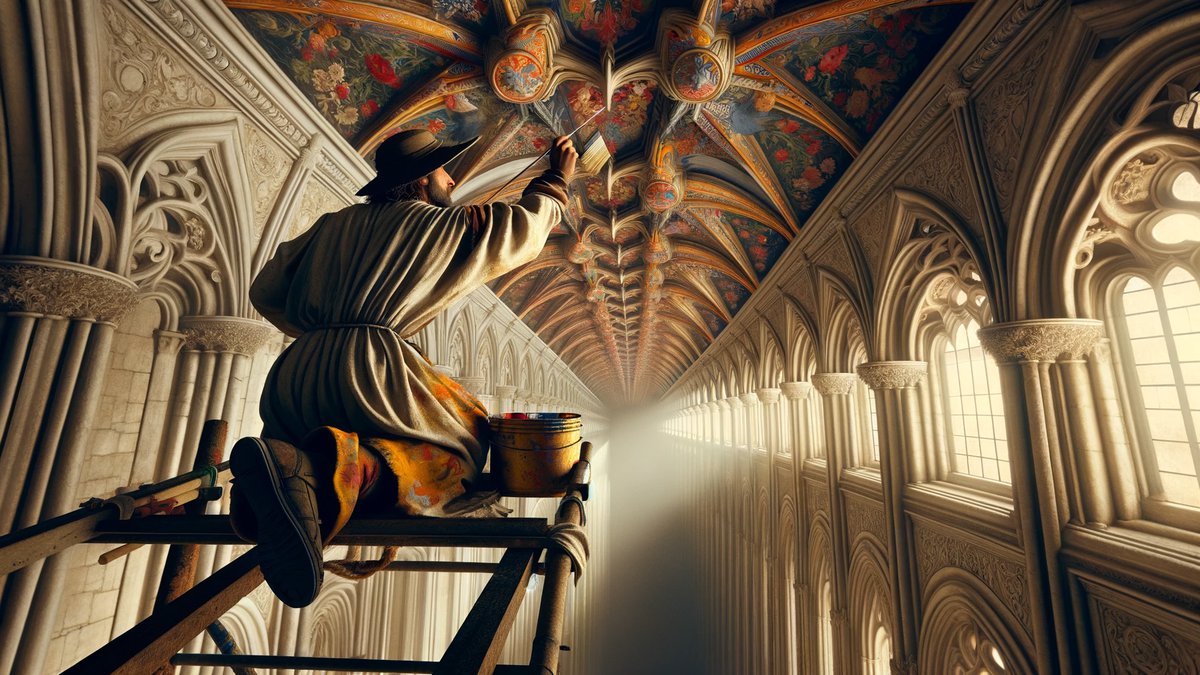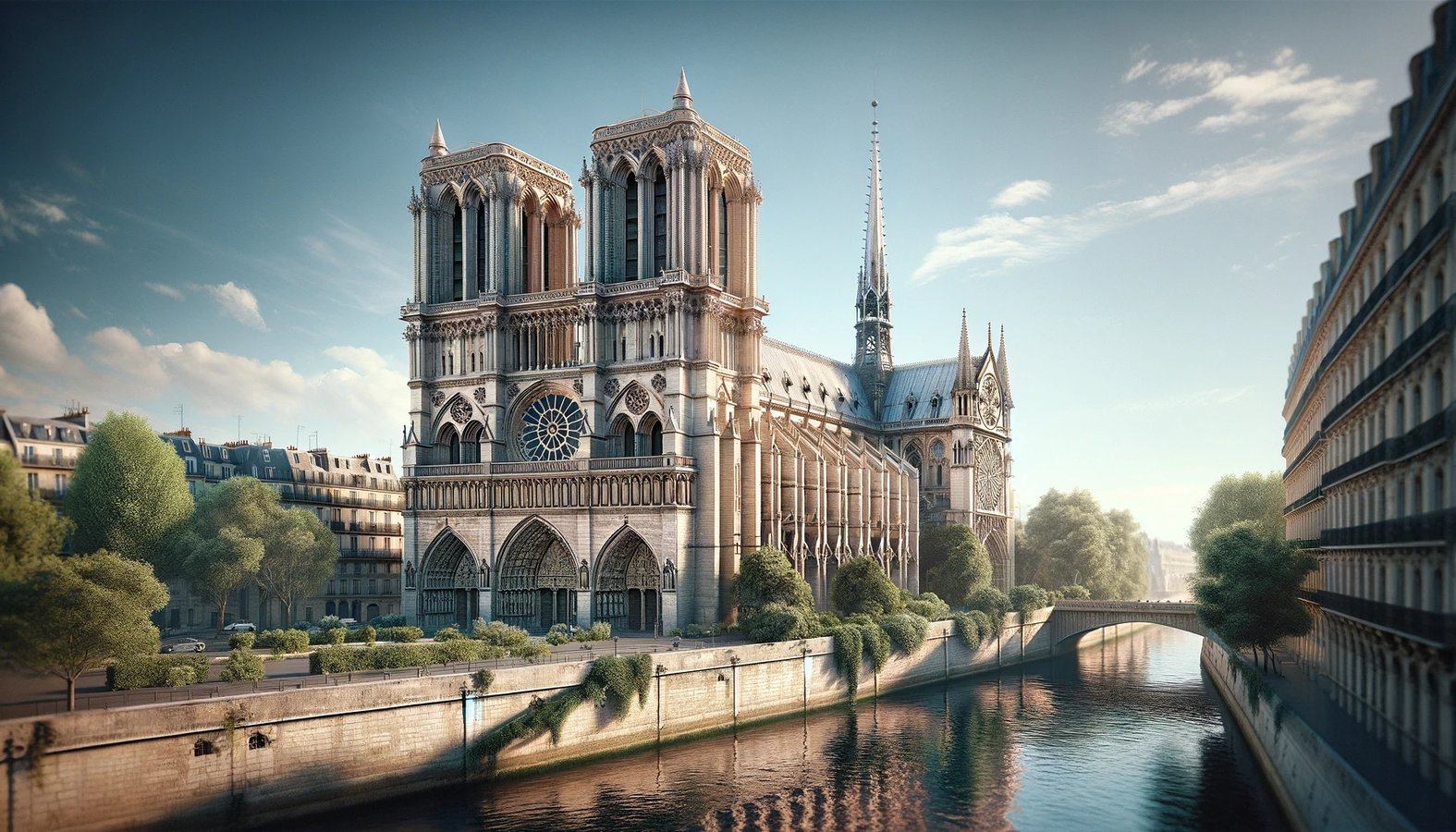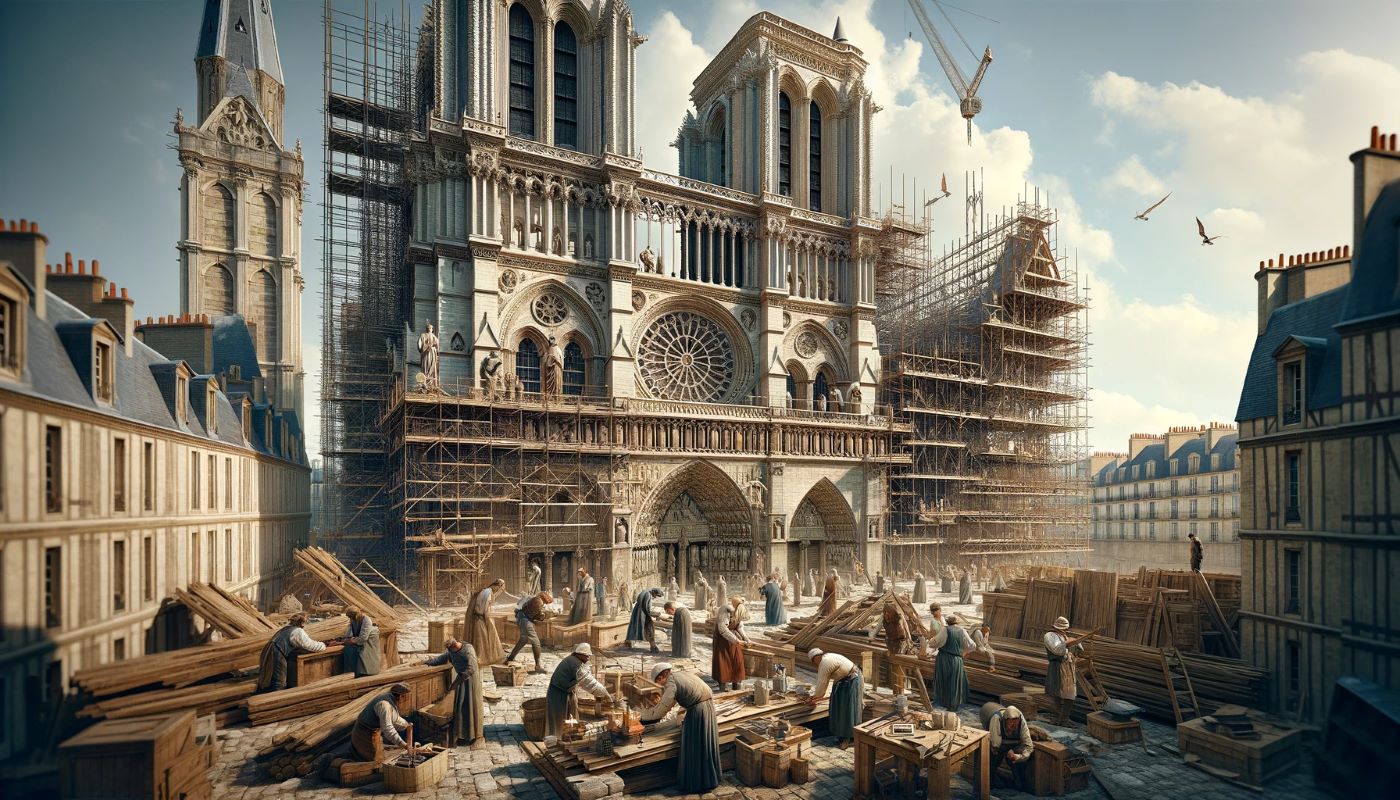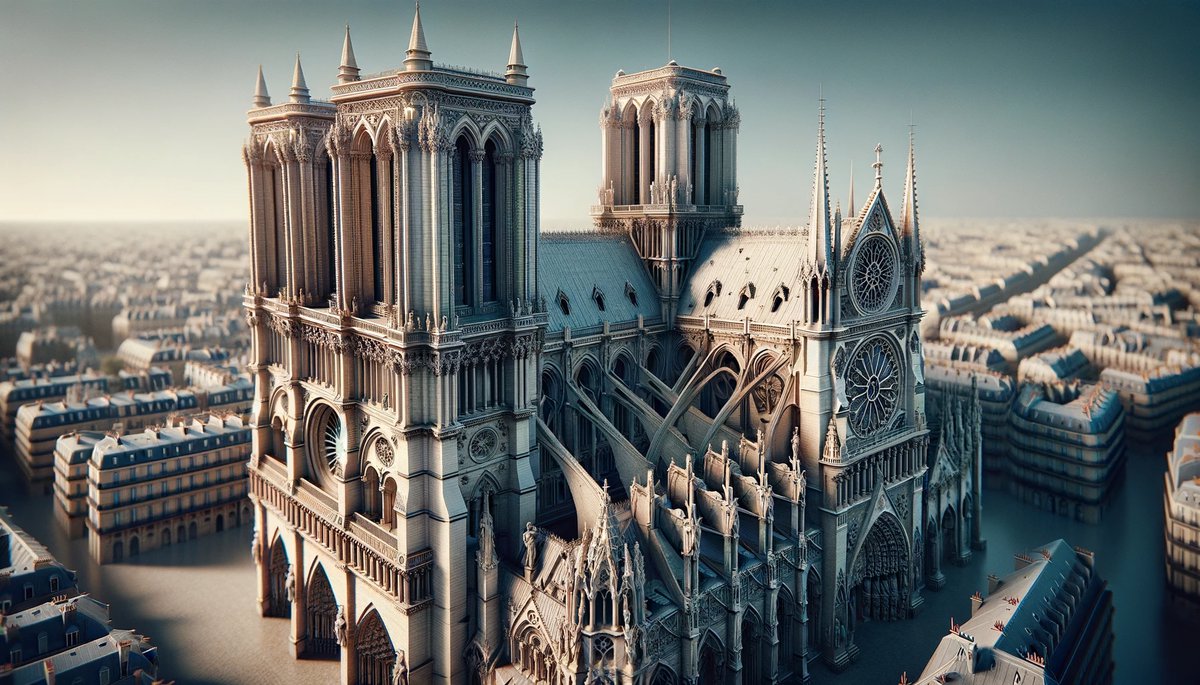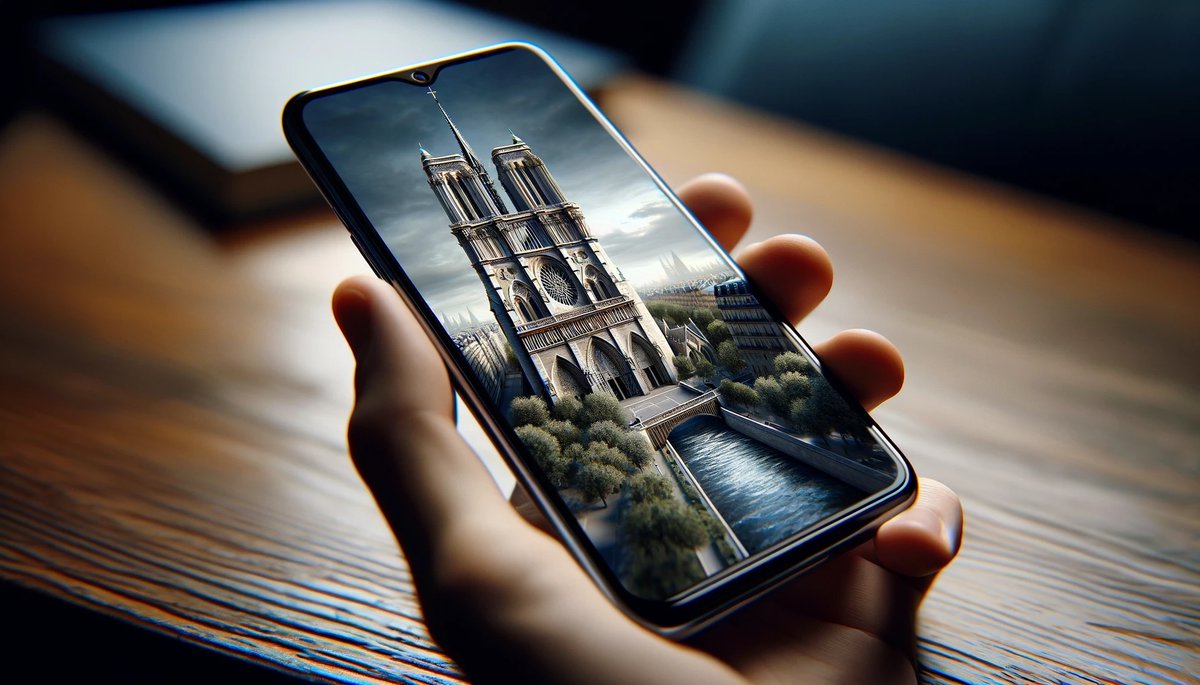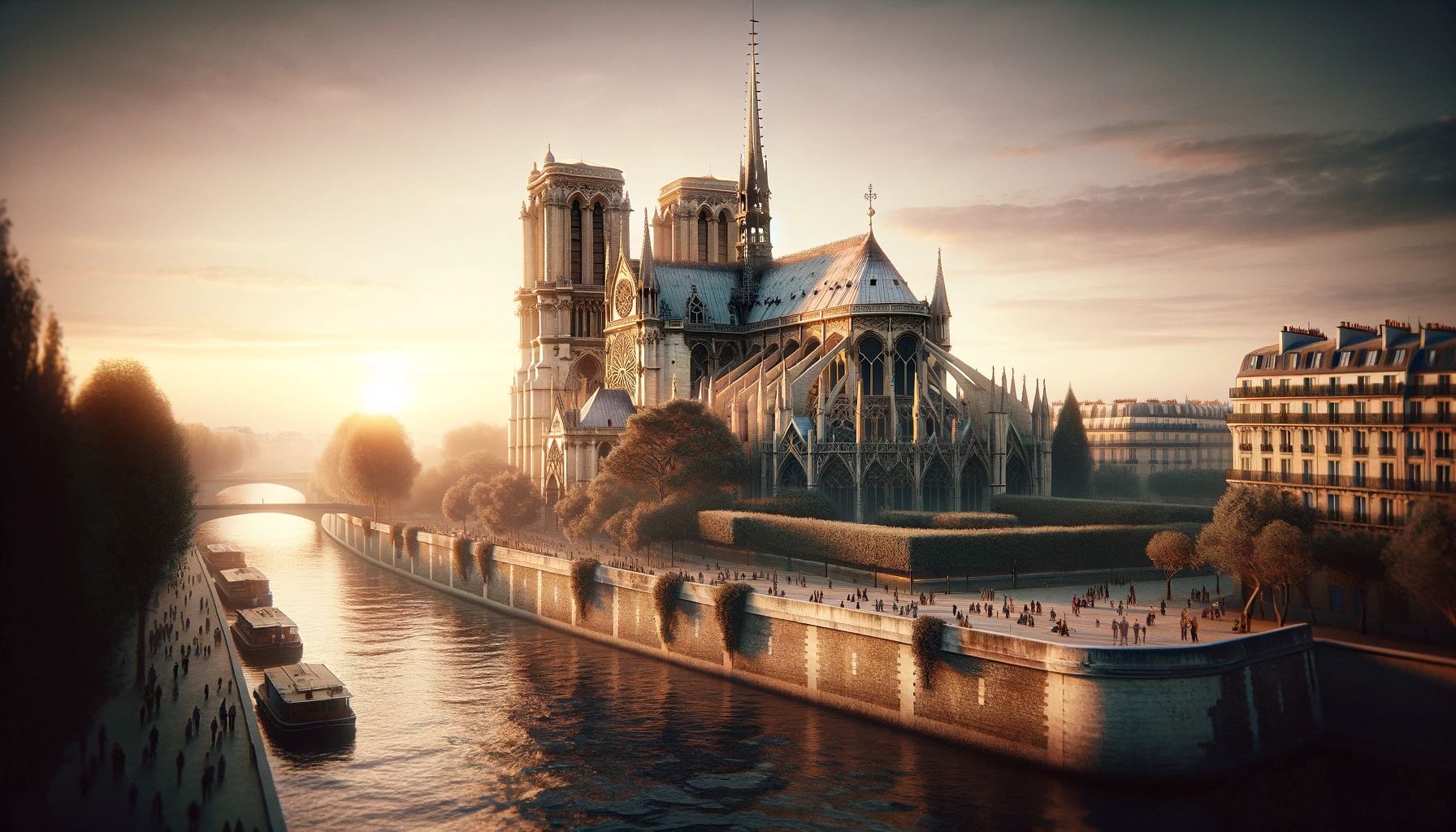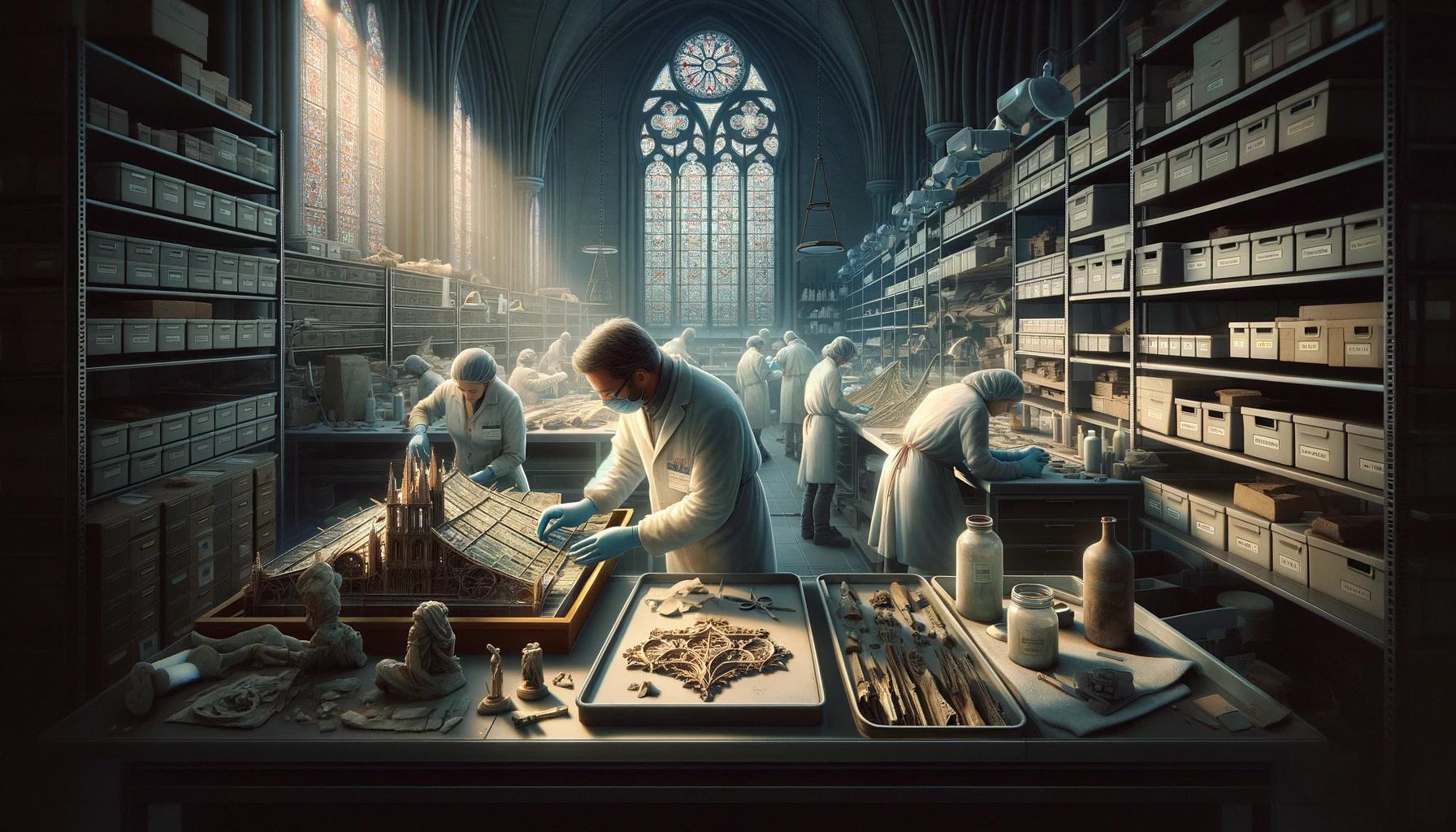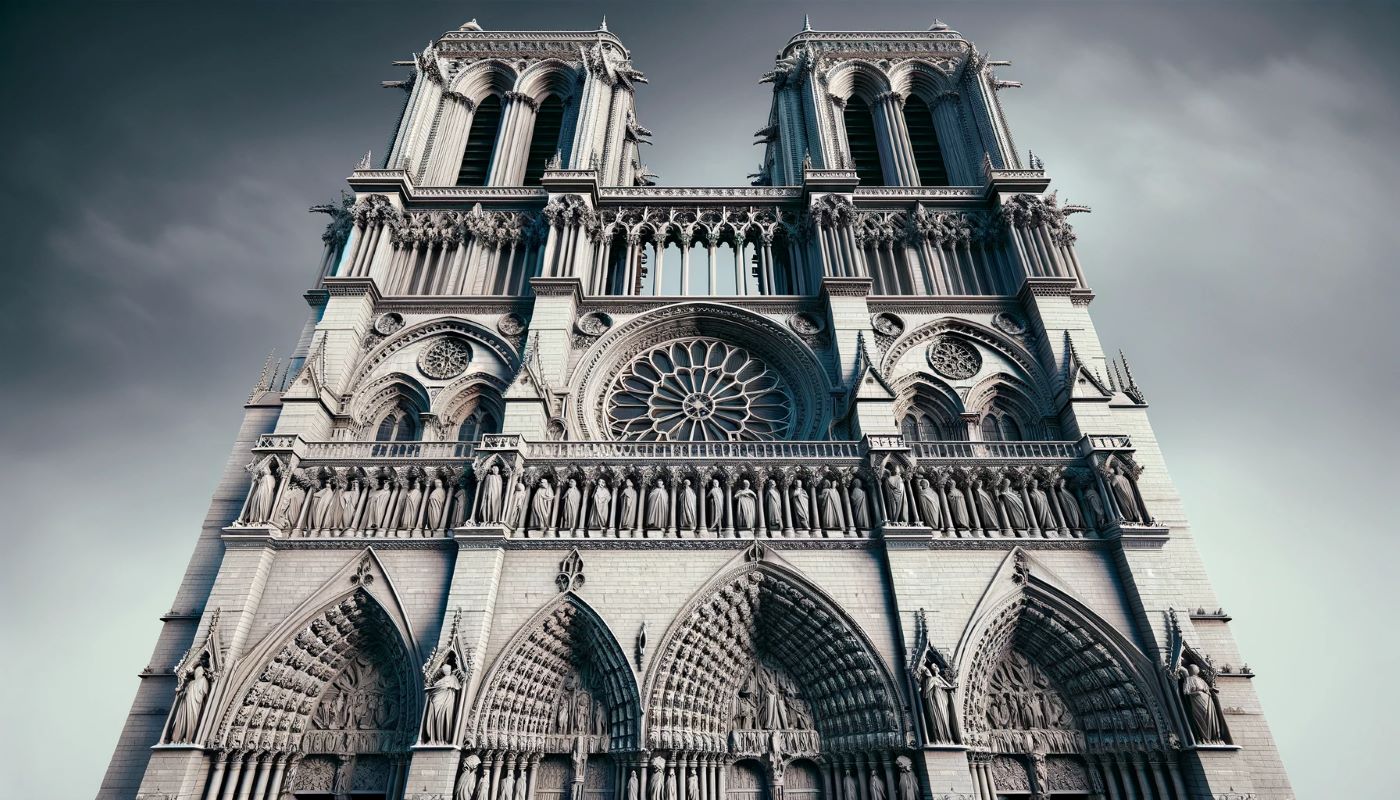Home>Arts and Culture>Who Paid For Notre Dame Cathedral To Be Built
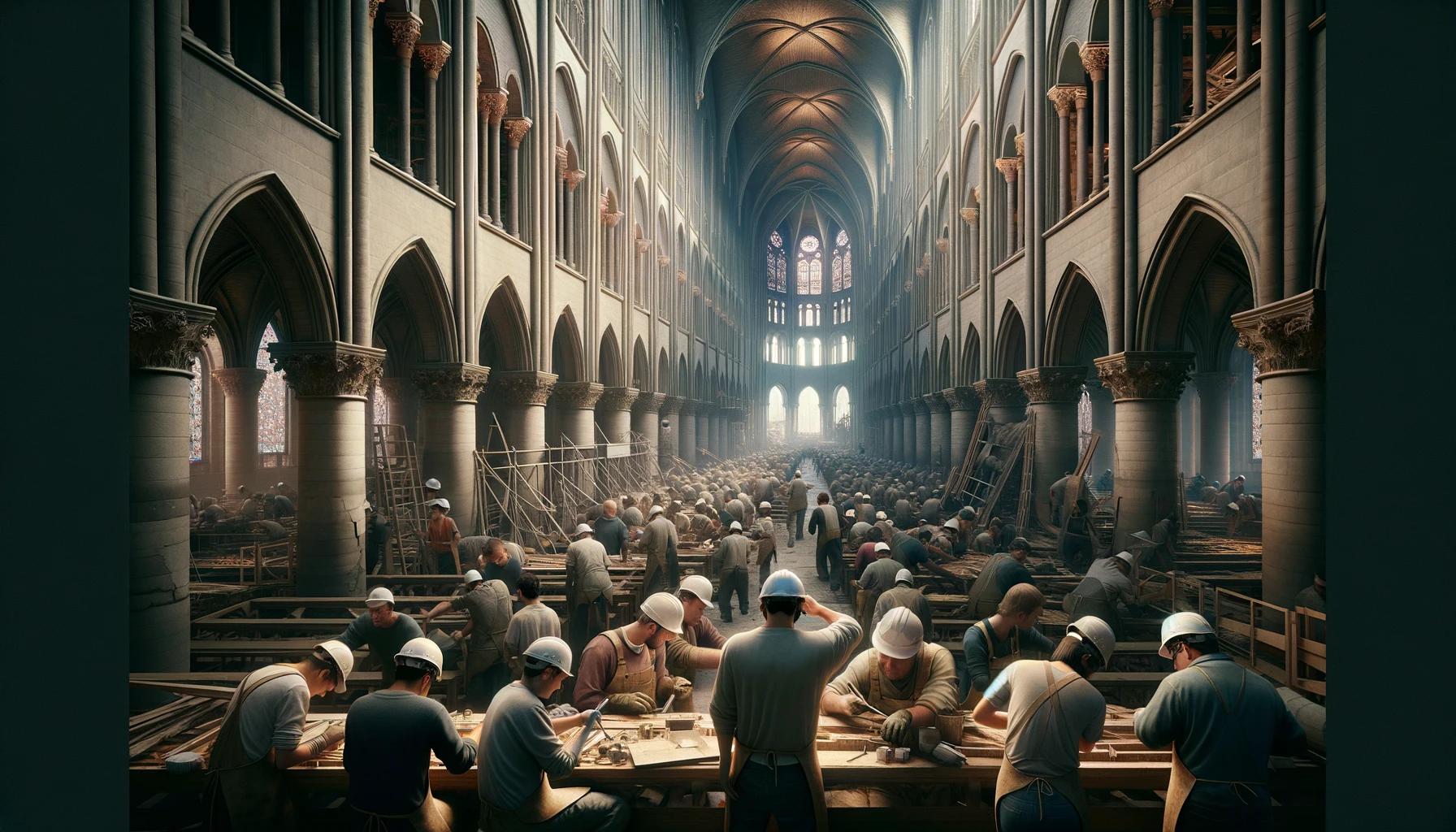

Arts and Culture
Who Paid For Notre Dame Cathedral To Be Built
Published: February 16, 2024
Ericka Andersen, an editor at Christian.net, expertly merges digital strategy with content creation, focusing on faith and societal issues. Her communication skills enhance the platform's engaging narratives, fostering meaningful dialogue on belief's impact on society.
Discover the history of the funding for the construction of Notre Dame Cathedral and the patrons who contributed to this iconic symbol of arts and culture. Explore the financial support behind the creation of this historic masterpiece.
(Many of the links in this article redirect to a specific reviewed product. Your purchase of these products through affiliate links helps to generate commission for Christian.net, at no extra cost. Learn more)
Table of Contents
Introduction
The Notre Dame Cathedral, a timeless symbol of Paris, stands as a testament to the ingenuity and artistry of human civilization. This architectural marvel has captured the hearts and minds of people around the world, drawing millions of visitors each year to marvel at its grandeur and historical significance. The cathedral's rich history, stunning Gothic design, and cultural significance make it a cherished icon not only for Parisians but for people across the globe.
The Notre Dame Cathedral, also known as Notre-Dame de Paris, is a masterpiece of medieval architecture, boasting intricate rose windows, imposing spires, and awe-inspiring flying buttresses. Its construction began in the 12th century and continued for over a hundred years, showcasing the unwavering dedication and craftsmanship of the artisans and builders involved in its creation. The cathedral's enduring presence has weathered the tides of time, bearing witness to centuries of historical events and societal transformations.
As a beacon of faith and a symbol of French heritage, Notre Dame Cathedral has played a pivotal role in the cultural tapestry of Paris. Its significance extends beyond religious boundaries, serving as a source of inspiration for artists, writers, and historians alike. The cathedral's architectural splendor and historical resonance have made it a focal point for countless works of art, literature, and scholarly discourse.
In the wake of the devastating fire that engulfed Notre Dame Cathedral in April 2019, the world witnessed an outpouring of support and solidarity, underscoring the cathedral's profound impact on global consciousness. The incident sparked a renewed sense of urgency to preserve and restore this architectural treasure, igniting a collective effort to ensure that Notre Dame Cathedral continues to stand as a testament to human achievement and resilience.
As we delve into the history, funding, and restoration efforts surrounding Notre Dame Cathedral, we embark on a journey that unveils the intricate tapestry of human endeavor, cultural heritage, and the enduring spirit of preservation. Join us as we unravel the captivating story of Notre Dame Cathedral, delving into the depths of its past, present, and future.
Read more: Notre Dame Cathedral: Who Is Buried There
History of Notre Dame Cathedral
The history of Notre Dame Cathedral is a captivating saga that unfolds across centuries, weaving together the threads of architectural innovation, cultural evolution, and historical milestones. Construction of this iconic edifice commenced in 1163 during the reign of King Louis VII and continued for over a hundred years, culminating in the completion of the cathedral in 1345. The architectural marvel stands as a quintessential example of French Gothic design, characterized by its soaring spires, intricate rose windows, and imposing flying buttresses.
Notre Dame Cathedral's construction was a testament to the unwavering dedication and craftsmanship of the artisans and builders involved in its creation. The cathedral's foundation was laid upon the site of earlier churches, reflecting a rich tapestry of religious significance and architectural heritage. The visionary design of the cathedral, attributed to Bishop Maurice de Sully, sought to elevate the spiritual experience through awe-inspiring grandeur and intricate detailing.
Throughout its storied history, Notre Dame Cathedral bore witness to a myriad of historical events, serving as a backdrop for royal coronations, religious ceremonies, and significant cultural moments. The cathedral's enduring presence weathered the tumultuous tides of time, standing as a silent sentinel amid the ebbs and flows of societal transformations and historical upheavals.
Notre Dame Cathedral's significance transcends its religious and architectural dimensions, permeating the realms of art, literature, and cultural consciousness. The cathedral has inspired countless works of art, including Victor Hugo's renowned novel "The Hunchback of Notre-Dame," which brought the cathedral to the forefront of global literary imagination. Its architectural splendor and historical resonance have rendered it a symbol of French heritage and a testament to human creativity and ingenuity.
As we gaze upon the majestic silhouette of Notre Dame Cathedral, we are beckoned to delve into the annals of history, where the echoes of centuries past reverberate through its hallowed halls. The cathedral stands as a living testament to the enduring legacy of human endeavor, cultural heritage, and the timeless pursuit of architectural excellence.
Funding for the Construction
The ambitious undertaking of constructing Notre Dame Cathedral required substantial financial resources and unwavering patronage. The funding for this monumental project was sourced from a diverse array of channels, reflecting the intersection of religious, royal, and societal influences during the medieval era.
At the heart of the funding mechanism was the support of the Catholic Church, which played a pivotal role in providing the necessary resources for the cathedral's construction. The church, wielding considerable influence and wealth, allocated significant funds toward the realization of Notre Dame Cathedral, viewing it as a testament to the grandeur of divine worship and a symbol of religious devotion.
In addition to the church's patronage, the French monarchy, particularly King Louis VII, contributed substantial financial backing to the construction efforts. The royal coffers provided crucial support, underscoring the cathedral's significance as a symbol of regal authority and national pride. The monarchy's investment in Notre Dame Cathedral reflected a convergence of religious and political interests, solidifying the cathedral's status as a monumental endeavor of national importance.
Furthermore, the burgeoning urban population of Paris during the medieval period played a pivotal role in funding the cathedral's construction. The burgeoning merchant class, driven by economic prosperity and civic pride, contributed through donations and bequests, further bolstering the financial resources required for the cathedral's realization. The collective contributions of the populace underscored the communal spirit and shared commitment to erecting a monument that would stand as a testament to the city's cultural and spiritual identity.
The funding for Notre Dame Cathedral's construction, therefore, emanated from a confluence of religious, royal, and societal sources, reflecting the multifaceted tapestry of medieval society. The cathedral's creation was made possible through the harmonious interplay of divine patronage, regal support, and communal solidarity, culminating in the realization of a timeless architectural masterpiece that continues to inspire awe and reverence to this day.
Donations and Contributors
The construction of Notre Dame Cathedral was made possible through the generous contributions of a diverse array of donors and patrons, each playing a pivotal role in shaping the cathedral's grandeur and historical significance. The collective efforts of these benefactors underscored the communal spirit and shared commitment to erecting a monument that would stand as a testament to the city's cultural and spiritual identity.
At the forefront of the cathedral's funding were the contributions from the Catholic Church, which channeled substantial resources to support the ambitious construction project. The church, wielding considerable influence and wealth, viewed Notre Dame Cathedral as a testament to the grandeur of divine worship and a symbol of religious devotion. Its unwavering patronage provided a cornerstone for the cathedral's financial foundation, reflecting the pivotal role of religious institutions in fostering artistic and architectural endeavors during the medieval era.
In addition to the church's support, the French monarchy, particularly King Louis VII, played a significant role as a benefactor of the cathedral's construction. The royal patronage not only provided crucial financial backing but also underscored the cathedral's significance as a symbol of regal authority and national pride. The monarchy's investment in Notre Dame Cathedral reflected a convergence of religious and political interests, solidifying the cathedral's status as a monumental endeavor of national importance.
Furthermore, the burgeoning urban population of Paris during the medieval period contributed to the cathedral's construction through donations and bequests. The burgeoning merchant class, driven by economic prosperity and civic pride, recognized the cultural and spiritual significance of Notre Dame Cathedral, and their contributions further bolstered the financial resources required for its realization. The collective support from the populace exemplified the shared commitment to erecting a monument that would stand as a testament to the city's cultural and spiritual identity.
The collective contributions of the church, monarchy, and urban populace, therefore, formed the bedrock of Notre Dame Cathedral's funding, reflecting the harmonious interplay of divine patronage, regal support, and communal solidarity. The cathedral's creation was made possible through the convergence of diverse contributions, each leaving an indelible mark on the architectural masterpiece that continues to inspire awe and reverence to this day.
Controversies and Debates
The illustrious history of Notre Dame Cathedral has been punctuated by a tapestry of controversies and debates, adding layers of complexity to its narrative. One of the most enduring debates revolves around the cathedral's restoration and preservation, particularly in the wake of the devastating fire that engulfed its iconic spire and roof in April 2019. The aftermath of the fire sparked intense discussions regarding the most appropriate approach to restoring this architectural treasure, fueling a spectrum of viewpoints and deliberations.
Central to the debates surrounding Notre Dame Cathedral's restoration is the question of historical authenticity versus modern intervention. Advocates for historical authenticity argue for a meticulous restoration process that honors the cathedral's original design and craftsmanship, seeking to preserve its centuries-old heritage in its purest form. This stance emphasizes the intrinsic value of preserving the cathedral as a living testament to medieval architectural ingenuity, advocating for a restoration approach that adheres closely to historical blueprints and techniques.
Conversely, proponents of modern intervention advocate for incorporating contemporary architectural elements and technologies in the restoration process. This perspective emphasizes the opportunity to infuse Notre Dame Cathedral with innovative structural solutions and design concepts, aiming to revitalize the edifice while ensuring its resilience for future generations. The proponents of modern intervention argue that embracing contemporary methodologies can safeguard the cathedral against potential risks and enhance its structural integrity, aligning with the imperative of adapting to evolving architectural standards.
Furthermore, the controversies surrounding Notre Dame Cathedral extend to the realm of funding and patronage for its restoration. The allocation of resources and the selection of benefactors have been subjects of intense scrutiny and deliberation, reflecting the complexities inherent in balancing preservation efforts with financial considerations. Debates have emerged regarding the role of private donors, governmental agencies, and international organizations in spearheading the restoration initiatives, with divergent perspectives on the most effective and ethical means of funding the cathedral's revival.
The controversies and debates surrounding Notre Dame Cathedral encapsulate a spectrum of viewpoints, each reflecting a profound reverence for its historical significance and architectural splendor. As the discussions continue to unfold, they underscore the enduring impact of this iconic edifice on global consciousness and the complexities inherent in preserving cultural heritage in a rapidly evolving world.
Read more: Who Insured Notre Dame Cathedral
Restoration and Future Funding
The restoration of Notre Dame Cathedral stands as a monumental endeavor that transcends the realms of architectural preservation and cultural heritage. Following the devastating fire that engulfed the cathedral's iconic spire and roof in April 2019, the global community rallied in a collective effort to chart a path toward its restoration and secure the necessary funding for this ambitious undertaking.
The restoration of Notre Dame Cathedral represents a harmonious convergence of tradition and innovation, encapsulating a commitment to preserving its historical authenticity while embracing modern methodologies. The meticulous restoration process entails a comprehensive assessment of the structural integrity of the cathedral, guided by a reverence for its centuries-old craftsmanship and architectural significance. Preservation experts, artisans, and architects collaborate to meticulously restore the cathedral's intricate details, employing time-honored techniques and materials to ensure the faithful reconstruction of its iconic features.
In tandem with honoring its historical legacy, the restoration efforts also embrace technological advancements and contemporary structural solutions to fortify the cathedral against potential risks and enhance its resilience for future generations. The integration of innovative methodologies and sustainable practices underscores a forward-looking approach to safeguarding Notre Dame Cathedral as a living testament to architectural ingenuity and cultural heritage.
The future funding for the restoration of Notre Dame Cathedral encompasses a multifaceted landscape, encompassing a diverse array of stakeholders and benefactors. Private donors, governmental agencies, and international organizations have emerged as pivotal contributors to the restoration initiatives, reflecting a shared commitment to preserving this architectural treasure for posterity. The allocation of resources and the ethical considerations surrounding funding sources remain subjects of ongoing deliberation, underscoring the complexities inherent in balancing preservation efforts with financial imperatives.
As the restoration of Notre Dame Cathedral unfolds, it serves as a poignant reminder of the enduring resonance of cultural heritage and the collective responsibility to safeguard architectural marvels for future generations. The cathedral's revival embodies a testament to human resilience, innovation, and unwavering dedication to preserving the timeless legacy of one of the world's most cherished architectural treasures.
